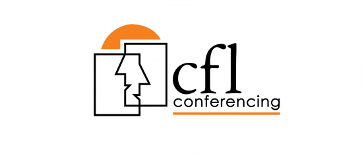
Keys to Hosting an Effective Conference Call
A conference call provider has been chosen, the conference line is in place, now what? Round up colleagues, clients, and employees, regardless of their location, and get that business conference call started. However, keep in mind this isn’t your ordinary phone call. It’s a way to convene without the hassle of commuting and travel expenses, while bolstering a business. To stay on track there are several points to consider in order to host an effective conference call.
- Draft an Agenda – A conference call, particularly with a large number of participants, has the potential to veer of topic and end before anything is accomplished. To make the most of a conference call, the host should create an agenda prior to every call. When making an agenda, put the most important and time-consuming topics at the top. This ensures that the chairperson will have enough time to expound upon a specific subject and high priority items are guaranteed to be discussed within the conference. Less important items will have to be dealt with in a succinct manner. If there are other topics that participants would like addressed, attempt to group similar items together to save time. Stick to the agenda for the most productive conference call meeting. If time allows, e-mail or fax a copy of the agenda to each participant before the call.
- Set Up the Details – While a CFL Conferencing conference is reservationless and can be conducted on a whim, it is still best to give participants some notice. Alert attendees of the time, date, dial in number, and entry code. When a call occurs last minute, it is important to have a conference call service that offers a dial-out option. This allows the host to call individuals and include them in the conferencing meeting.
- E-mail or Fax Visuals in Advance – If the chairperson is not holding a webinar, e-mailing or faxing visual aids to participants in advance is a good way to illustrate points. Send graphs, charts, or anything that will serve to enhance the points made during the call.
- Find a Quiet Place – The chairperson in particular should close their office door, inform co-workers that he or she is not to be disturbed, avoid typing noisily or rustling around for items on a desk, and make all efforts to keep disturbances at bay. The mute function is helpful, but cannot be used while a person is talking.
- Watch the Clock – The host should always be on time. Until the chairperson’s entry code is typed in, participants will be on hold. To look professional and organized, timeliness is key. Determine a solid start and end time for the business conference call and stick to it. This will enhance efficiency. There are options to allow the conferencing to continue once the host leaves. But in order to respect everyone’s schedule and commitments, it is ideal to stick to the timeline. Start with a roll call and have participants announce their name. Once the roll call is complete, establish the time limits for each point on the agenda.
- Introductions – The chairperson should introduce themselves when beginning the conference call. While many people assume colleagues, clients, or employees know their voice, this isn’t always the case. Every participant, including the moderator, should state their name before making a comment. This eliminates any confusion.
- Use the Conferencing Command Codes – The CFL Conferencing provides customers with a list of command codes to take control of their calls. Use these to maintain the flow of the conference call, while eliminating distractions. If the chairperson presses hold, for example, all of the participants will be left listening to music. Instead, the moderator should press the key for mute to block out the noise while still being able to hear the proceedings. Encourage participants to do the same. If a window is open with street noise in the background or a dog is barking, participants should mute themselves. If not, the chairperson has the ability to mute them. Instead of having participants state their names once again or attempting to count them, hit the roll call or participant count keys. To avoid the distractions of latecomers, hosts can use the conference lock function to bar newcomers from entering the call.
- Make it a Collaborative Effort – Just as with any meeting, the host should open the floor to other’s opinions or comments. Address individual participants by name and ask for their feedback. Get all of the participants involved.
- Hit Record – Don’t waste time re-capping the entire conference for those who couldn’t attend or sending out a summary to those who did attend. Instead, record the conference call. A quality conference call service will offer this option. The host will then have the entire call saved. This can be given to clients or colleagues who were unavailable or even sent out to participants who did attend as a refresher for key points.
- Say Goodbye Clearly – Having numerous participants on one call means that the chairperson needs to clearly communicate that the call is over. Make sure all of the participants are aware so that no one feels as if they were hung up on.
- Follow Up – Send out a brief e-mail thanking participants for being involved. If necessary, schedule a future conference and remind them of the entry code and phone number.
Hosting an effective conference call takes organization. It is the same legwork and forethought that is involved in any type of business meeting. By eliminating the need to travel and having the ability to connect individuals from all over the world, a well-planned, effective conference call reduces business expenses and saves time.
